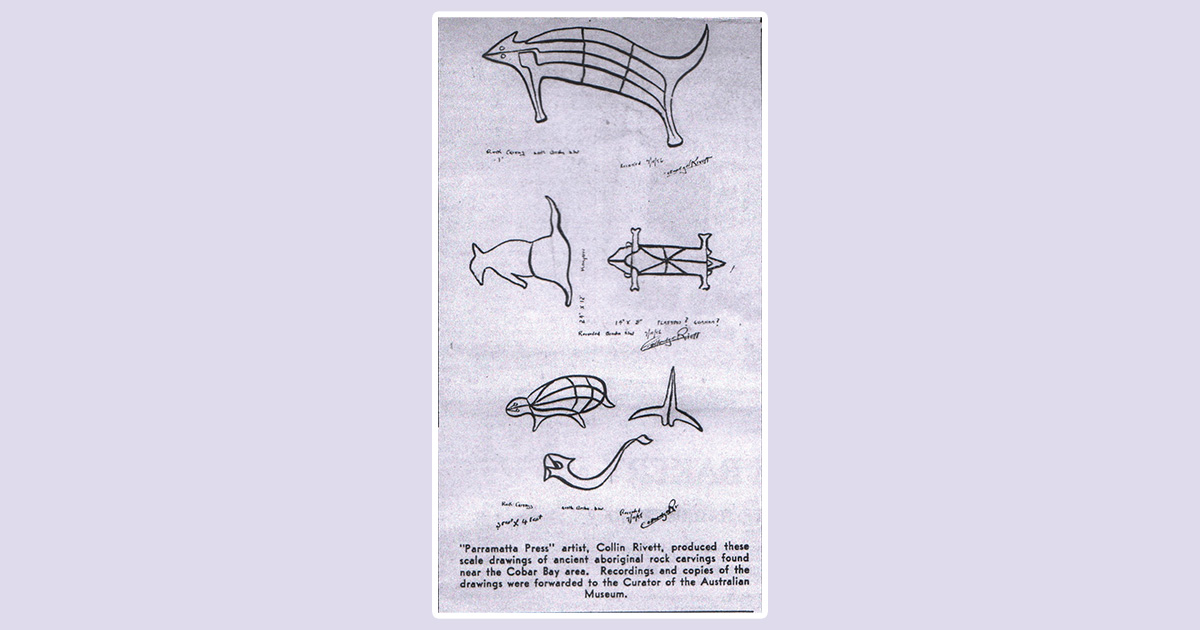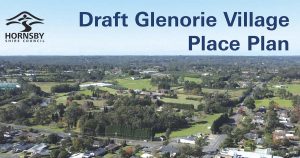A recent ‘off the cuff’ conversation with a long term resident of the area regarding the lack of any identifying presence of indigenous occupation/footprint in our local area, sparked a passionate response, when she told me that i was absolutely incorrect in this assumption.
I have seen with my own eyes rock carvings at both Maroota and Canoelands, but was unaware of anything further south than these. Unfortunately at some time in the 1960’s/1970’s, scaremongering rumours began to spread that if anyone had any sites of Aboriginal significance on their properties that they may be open to their land being repossessed or having a caveat placed upon the title and so many landowners began a subtle (and sometimes not so subtle) process of covering up any identifying artefacts. Luckily history has recorded one such local discovery for posterity, and I include some excerpts from article below:
Excerpt: The Parramatta Press
Thursday, January 3, 1957
Local Aboriginal Art Found
Aboriginal Cave Drawings
FIRES PREVENT NEW RECORDINGS
Parramatta Pressman, Collingridge Rivett, was guided to one of the biggest aboriginal art finds for decades early this week.
Farmers from the Fiddletown-Annangrove area formed an expedition and cut their way into thick, rough country in Northern Arcadia to enable the pressman to fully record the valuable discoveries.
Well-known Arcadian farmer, Mr. Kenneth Peebles, originally found the fascinating cave with a friend, Alan Gillis, seventeen years ago. After Mr. Peebles heard of the discoveries of rock carvings in this locality some months ago, he informed friends and Parramatta Press. The party, interested in preserving the ancient art of the Australian aboriginals, set out at dawn in a successful attempt to fully record the cave’s art. However, bush fires forced the party to return back from the wild hilly country, while sketches and photographs were being made of rock carvings nearby.
The cave, some five miles west of uninhabited Calabash Bay, overlooks a magnificent tropical-like native paradise of lush vegetation and wildlife. The position of the cave suggests it was selected by abo. Elders, as a “royal box”, overlooking picturesque ceremonial grounds.

Some thirty paintings were found in the cave, nearly all depicting local wild life. Among the modern-like works were three wallabies, an emu, porcupine, blue-tongued lizard, fish and snakes. There were also five strange man-like characters without necks drawn at the foot of the largest mural. Largest figure seen was a wallaby, about 40 inches long. Some 80 square feet of the cave, which faces south, is decorated with the drawings produced in orange, red and yellow ochres and black pigments.
Many figures are ‘super-imposed’ over each other, showing an abstract pattern. The dyes or ochres used have preserved the stone faces upon which the drawings are produced. Where no drawings show on the wall, the face of the rock is ‘sanding’ away. Damp, moss and age have ruined many works and the remaining art appears to be fading. It would be correct to assume the art is hundreds of years old. The aboriginal artists certainly selected a fine art gallery for the production of their interesting compositions.
Rock carvings depicting a huge fish-like creature, some 27 feet long, numerous wallabies, an emu, fish and a porpoise were recorded along upright rock faces after the cave was vacated. These carvings were seen by Mr. and Mrs. Peebles some weeks ago. They were found about a mile north-east of the cave. Most significant find of the recording party was a number of fresh water holes above a cliff face. Alongside the holes, well-worn grooves were found. Aboriginals obviously carved and sharpened their axe-heads there.
Experienced bushmen of the party warn people that the area is just not an ordinary Australian ‘bush-walker’s delight!’ Several would-be rock carving finders have become lost and police and locals have had to rescue them from the rugged, little-known ranges of primitive Marramarra. It is understood very few white men have ever penetrated this aboriginal “Lost Horizon.”






